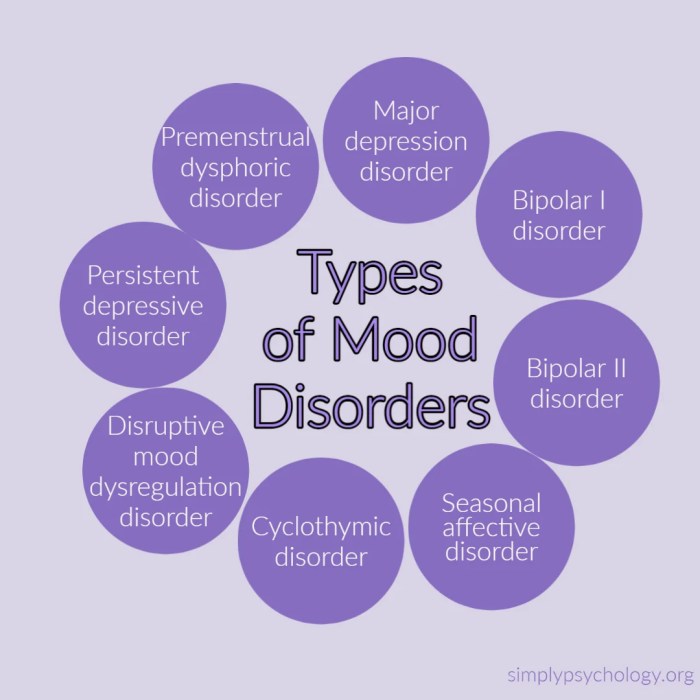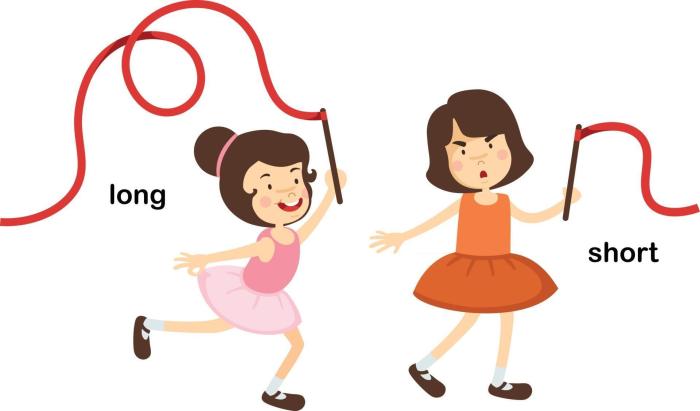Dysphoric mood warning signs and how to cope is a crucial guide for understanding and managing emotional distress. This comprehensive resource delves into the nuances of dysphoric moods, from recognizing the initial signs to developing effective coping mechanisms and seeking professional help. We’ll explore various types of dysphoric moods, their triggers, and a range of strategies to navigate these challenging emotional experiences.
Understanding the subtle and overt warning signs is key to proactively addressing escalating dysphoric moods. We’ll examine how these signs might manifest differently in individuals and highlight the importance of recognizing changes in sleep patterns, appetite, and energy levels as potential indicators. Additionally, we’ll discuss practical coping strategies, including relaxation techniques, mindfulness practices, and self-care routines. By understanding and implementing these techniques, individuals can effectively manage their emotional well-being and cultivate resilience.
Identifying Dysphoric Mood
Dysphoric mood encompasses a broad range of unpleasant emotional states, varying in intensity and duration. Understanding these nuances is crucial for recognizing and addressing the underlying causes and effectively managing the associated discomfort. This exploration delves into the spectrum of dysphoric experiences, from mild unease to severe distress, and provides examples of situations that might trigger such responses.Dysphoric mood is characterized by a persistent feeling of sadness, anxiety, or irritability.
It’s not simply feeling down; it’s a more pervasive and often prolonged state of emotional negativity. This encompasses a wide range of emotional experiences, impacting daily functioning and overall well-being.
Understanding the Spectrum of Dysphoric Mood
Dysphoric mood isn’t a singular experience. It manifests in various forms, each with its own intensity and duration. The range of emotional experiences associated with dysphoric mood extends from mild unease to severe distress, significantly impacting an individual’s daily life.
Different Forms and Intensities of Dysphoric Mood
Various factors contribute to the diverse range of dysphoric moods. Different situations, past experiences, and underlying conditions can all influence the type and intensity of dysphoric mood.
- Mild dysphoria can be characterized by a general sense of unease, irritability, or low mood. This might manifest as feeling slightly grumpy, restless, or having difficulty concentrating. These experiences can often be managed with self-care strategies.
- Moderate dysphoria is marked by more pronounced feelings of sadness, anxiety, or frustration. It can lead to difficulties with daily tasks and social interactions. Examples include feeling overwhelmed, experiencing a significant drop in motivation, or becoming withdrawn from social activities.
- Severe dysphoria can involve intense feelings of sadness, hopelessness, or anxiety. It can significantly impair daily functioning and lead to a complete loss of interest in activities once enjoyed. Severe dysphoria often requires professional intervention to address the underlying cause.
Situations That Might Trigger Dysphoric Mood
Numerous situations can trigger dysphoric mood. These can stem from internal factors like unresolved emotional conflicts or external factors like stressful life events.
- Relationship conflicts, such as disagreements, misunderstandings, or breakups, can lead to feelings of sadness, anger, or anxiety. These conflicts can also trigger feelings of isolation and loneliness.
- Significant life changes, such as job loss, moving, or a major illness, often cause stress and anxiety. These changes can lead to feelings of uncertainty and fear about the future.
- Financial strain and economic hardship can induce feelings of anxiety, worry, and hopelessness. The pressure of meeting financial obligations can be particularly challenging and can significantly impact mental well-being.
Observable Physical Symptoms
Dysphoric mood can manifest not only emotionally but also physically. Recognizing these physical symptoms can be crucial in identifying and managing the underlying condition.
Feeling down? Recognizing dysphoric mood warning signs is key to managing your emotional well-being. Sometimes, physical discomfort can also be a trigger, like when you’re dealing with post-procedure care and need to know how to remove your steri strips properly. For detailed instructions on safely removing steri strips, check out this helpful guide: how do i remove my steri strips.
Understanding how to manage physical discomfort can actually help with managing dysphoric mood. Focusing on self-care and seeking support when needed is always a good strategy.
- Changes in appetite, such as increased or decreased hunger, are common. These changes can be influenced by stress and emotional distress.
- Sleep disturbances, including insomnia or excessive sleeping, are frequent accompaniments to dysphoric mood. These disturbances can disrupt daily routines and overall well-being.
- Physical tension, such as headaches, muscle aches, or stomachaches, can often accompany dysphoric mood. These physical symptoms can be a direct result of the stress and anxiety associated with the emotional state.
Comparing and Contrasting Different Dysphoric Moods
The following table provides a comparison of different dysphoric mood types, considering their descriptions, intensity, and duration.
| Mood Type | Description | Intensity | Duration |
|---|---|---|---|
| Mild Dysphoria | General sense of unease, irritability, or low mood | Low | Short-term |
| Moderate Dysphoria | Pronounced feelings of sadness, anxiety, or frustration; impacting daily tasks and social interactions | Medium | Days to weeks |
| Severe Dysphoria | Intense feelings of sadness, hopelessness, or anxiety; significantly impairing daily functioning | High | Weeks to months (or longer) |
Recognizing Warning Signs

Understanding the warning signs of escalating dysphoric mood is crucial for early intervention and effective coping strategies. Recognizing these signs, both subtle and overt, allows for proactive management and potentially prevents more severe episodes. Early detection allows for timely intervention and support, promoting a more positive trajectory.Identifying these signs requires self-awareness and the ability to observe personal patterns.
It’s important to remember that everyone experiences and expresses dysphoric mood differently. What might be a subtle warning sign for one person could be a more obvious indicator for another. Therefore, paying attention to individual variations in behavior and emotional responses is key to accurate identification.
Subtle Warning Signs
Early warning signs of escalating dysphoric mood often present as subtle changes in behavior and emotional expression. These early indicators are important because they can provide an opportunity to intervene before the mood worsens. Recognizing these subtle shifts is often the first step toward effective management.
- Decreased engagement in previously enjoyed activities. This might manifest as a withdrawal from social events or hobbies, or a diminished interest in things that used to bring pleasure. For example, someone who previously enjoyed playing video games might now find it difficult to focus or derive enjoyment from them.
- Increased irritability or frustration. This can manifest as heightened sensitivity to minor inconveniences or a quicker reaction to perceived slights. It could involve more frequent arguments or outbursts of anger.
- Difficulty concentrating or focusing on tasks. This can be a symptom of underlying emotional distress. For example, someone who used to be able to work efficiently on a project might now find it difficult to concentrate, leading to delays or mistakes.
- Changes in sleep patterns, including difficulty falling asleep or staying asleep, or excessive sleeping. These changes are often associated with emotional distress.
Overt Warning Signs
Overt warning signs are more pronounced and often easier to identify. These indicators usually signal a more significant shift in mood and require immediate attention.
- Persistent feelings of sadness, hopelessness, or worthlessness. These feelings can be overwhelming and interfere with daily functioning.
- Significant changes in appetite, including loss of appetite or increased cravings. These changes can lead to both physical and emotional distress.
- Feelings of overwhelming anxiety or panic. These intense feelings can be disruptive and lead to avoidance behaviors.
- Thoughts of self-harm or suicide. These are extremely serious warning signs that require immediate professional help.
Behavioral Changes
Behavioral changes associated with dysphoric mood can vary greatly depending on the individual. Some common examples include social withdrawal, decreased productivity, and changes in hygiene. These changes can be subtle initially, but can become more pronounced as the mood intensifies.
Sleep, Appetite, and Energy Levels
Changes in sleep patterns, appetite, and energy levels are often significant indicators of dysphoric mood. Reduced sleep, decreased appetite, and loss of energy can be symptoms of an underlying emotional disturbance.
| Warning Sign | Description | Possible Meaning |
|---|---|---|
| Decreased engagement in previously enjoyed activities | Reduced interest in activities that once brought pleasure | Potential for escalating dysphoric mood |
| Increased irritability or frustration | Heightened sensitivity to minor inconveniences, quicker reactions to perceived slights | Increasing emotional distress |
| Difficulty concentrating or focusing on tasks | Inability to maintain focus, increased mental fatigue | Potential for underlying emotional distress |
| Persistent feelings of sadness, hopelessness, or worthlessness | Ongoing and overwhelming feelings of despair | Significant dysphoric mood |
| Significant changes in appetite | Loss of appetite or increased cravings | Underlying emotional disturbance |
| Feelings of overwhelming anxiety or panic | Intense feelings of fear and distress | Possible escalation of anxiety or panic |
| Thoughts of self-harm or suicide | Serious thoughts of harming oneself or ending one’s life | Immediate professional help required |
Coping Strategies and Support Systems: Dysphoric Mood Warning Signs And How To Cope
Navigating dysphoric mood can feel overwhelming, but effective coping strategies and a strong support system are crucial for managing these experiences. This section explores various techniques for managing dysphoric mood, highlighting the importance of self-care and seeking help from others. By understanding and implementing these strategies, you can create a path towards emotional well-being.Understanding that dysphoric mood is a complex experience, coping strategies need to be personalized and flexible.
There is no one-size-fits-all solution, and what works for one person might not work for another. The key is to experiment with different approaches and find what resonates best with your individual needs.
Relaxation Techniques and Mindfulness Practices
Relaxation techniques and mindfulness practices can be incredibly helpful tools in managing dysphoric mood. These techniques aim to calm the mind and body, reducing feelings of anxiety and stress that often accompany dysphoric experiences. Deep breathing exercises, progressive muscle relaxation, and guided imagery are effective methods for promoting relaxation. Mindfulness practices, such as meditation and mindful awareness, encourage focusing on the present moment, reducing rumination on negative thoughts.
These techniques are not instant cures, but consistent practice can cultivate a sense of calm and stability.
Seeking Support from Others
Reaching out for support from loved ones and mental health professionals is vital. Friends, family, and support groups can offer understanding, encouragement, and a sense of belonging. Sharing your experiences and feelings with trusted individuals can help alleviate feelings of isolation and provide a much-needed perspective. A mental health professional can provide personalized guidance, evidence-based strategies, and support to navigate complex emotions.
Remember, seeking support is a sign of strength, not weakness.
Types of Support Groups
Numerous support groups cater to various needs and preferences. Online forums and support groups offer anonymity and accessibility, allowing individuals to connect with others experiencing similar challenges. In-person support groups provide opportunities for direct interaction and building relationships with peers. Support groups for specific conditions, like depression or anxiety, often offer tailored guidance and strategies for coping with the related symptoms.
Self-Care Practices
Self-care practices are essential for managing dysphoric mood. These practices encompass activities that nurture your physical, emotional, and mental well-being. Prioritizing sleep, maintaining a healthy diet, engaging in regular physical activity, and spending time in nature are examples of self-care strategies. Engaging in hobbies, pursuing interests, and setting realistic goals can also contribute to a positive sense of self.
Consistent self-care can significantly contribute to managing dysphoric mood.
Feeling down in the dumps? Understanding dysphoric mood warning signs is key to coping effectively. Sometimes, unexpected triggers can manifest as a change in mood, and figuring out the root cause can be tricky. Interestingly, some people experience similar symptoms related to a gluten allergy, such as fatigue or irritability. If you suspect you might have a gluten intolerance, exploring the signs of gluten allergy could help you identify patterns and potentially pinpoint a solution.
Ultimately, seeking support and identifying any underlying factors related to your mood swings is important.
Coping Mechanism Table
| Category | Method | Description |
|---|---|---|
| Emotional Regulation | Deep Breathing Exercises | Focusing on the breath to calm the nervous system, reducing anxiety and promoting relaxation. |
| Emotional Regulation | Progressive Muscle Relaxation | Systematically tensing and releasing different muscle groups to reduce physical tension and promote relaxation. |
| Emotional Regulation | Mindfulness Meditation | Practicing focused attention on the present moment, reducing rumination and promoting emotional awareness. |
| Problem-Solving | Identifying Triggers | Recognizing specific situations, thoughts, or feelings that contribute to dysphoric mood. |
| Problem-Solving | Developing Coping Strategies | Creating a plan of action to address specific triggers and manage challenging situations. |
| Problem-Solving | Seeking Professional Help | Consulting with a mental health professional for personalized support and guidance. |
| Self-Care | Healthy Diet | Nourishing the body with nutritious foods to support physical and emotional well-being. |
| Self-Care | Regular Exercise | Engaging in physical activity to release endorphins, improve mood, and reduce stress. |
| Self-Care | Adequate Sleep | Prioritizing sufficient sleep to restore the body and mind, improving emotional regulation. |
Managing Triggers
Understanding and managing triggers is crucial for effectively coping with dysphoric mood. Triggers are specific events, thoughts, or situations that can significantly increase the likelihood of experiencing a dysphoric mood episode. Identifying these triggers allows you to proactively develop strategies to minimize their impact and respond effectively when they arise. This proactive approach empowers you to take control of your well-being and navigate challenging situations with greater resilience.Identifying and addressing triggers is not about eliminating all potential stressors from your life, but rather about recognizing patterns and developing healthy responses to those situations.
Feeling down in the dumps? Understanding dysphoric mood warning signs is key to coping. Sometimes, changes in hormones can significantly impact your emotional state, which is why it’s important to consider what do hormones do in the body. what do hormones do These shifts can manifest in various ways, from irritability to sadness. Taking deep breaths, engaging in relaxing activities, and reaching out to loved ones are crucial for navigating these tough times.
By learning to recognize and manage triggers, you gain a powerful tool for enhancing your emotional regulation and overall well-being.
Identifying Triggering Events
Recognizing the specific situations, thoughts, or emotions that consistently precede or accompany dysphoric mood episodes is key to effective trigger management. This process often involves self-reflection and honest introspection. Keep a journal to track patterns. Note the time of day, specific events, thoughts, or emotions experienced before a dysphoric mood arises. Pay close attention to recurring themes and commonalities.
This detailed record helps you identify the situations or circumstances that most frequently contribute to your dysphoric mood. This understanding is a critical step in developing strategies for minimizing exposure and responding effectively.
Developing Strategies for Minimizing Exposure
Developing strategies to minimize exposure to triggers is a proactive approach to managing dysphoric mood. This involves identifying situations or factors that commonly provoke negative emotions. Creating physical distance or alternative pathways to avoid triggers can be effective. For example, if a certain social gathering consistently triggers negative emotions, finding alternative social activities or setting boundaries around participation can help.
Avoidance does not imply isolation; it is about prioritizing your well-being.
Responding Effectively to Triggers
Responding effectively to triggers involves developing coping mechanisms to manage the emotional impact. When a trigger is encountered, employ techniques to calm and regulate your emotional response. Deep breathing exercises, mindfulness practices, or engaging in a relaxing activity can be helpful. Remember, the goal is not to eliminate the trigger entirely but to learn to navigate its presence.
Common Triggers and How to Address Them
Common triggers for dysphoric mood can vary significantly from person to person. These can include interpersonal conflicts, unmet expectations, financial concerns, or even changes in routine.
- Interpersonal Conflicts: Learn assertive communication skills to express your needs and boundaries effectively. Practice active listening to understand others’ perspectives. If a particular relationship consistently causes distress, consider setting healthy boundaries or seeking professional mediation.
- Unmet Expectations: Challenge unrealistic expectations by practicing self-compassion and setting realistic goals. Focus on the progress you make rather than dwelling on unmet expectations. Learning to accept setbacks is a valuable life skill.
- Financial Concerns: Develop a budget, track expenses, and seek financial counseling if needed. Identify and address the root causes of financial stress. Creating a financial plan and understanding your spending habits can reduce the impact of financial concerns on your mood.
- Changes in Routine: Gradually adjust to changes in routine rather than making drastic shifts. Plan for transitions to minimize disruption and build in flexibility. Acknowledge the emotional impact of change and allow yourself time to adapt.
Maintaining a Healthy Lifestyle
Maintaining a healthy lifestyle significantly contributes to mitigating triggers for dysphoric mood. Prioritizing sleep, diet, and exercise can help regulate mood and reduce overall stress. Regular physical activity releases endorphins, which have mood-boosting effects. Nourishing your body with a balanced diet provides essential nutrients for optimal brain function. Adequate sleep is vital for emotional regulation and mental well-being.
Strategies to Avoid Common Triggers
- Social Triggers: Avoid or limit exposure to individuals or situations that consistently trigger negative emotions. Prioritize your well-being and set boundaries.
- Environmental Triggers: Modify your environment to reduce exposure to factors that exacerbate dysphoric mood. For example, if noise is a trigger, consider using noise-canceling headphones or relocating to a quieter space.
- Thought Patterns: Challenge negative thought patterns and replace them with more positive and realistic ones. Practice self-compassion and focus on your strengths.
- Situational Triggers: Identify situations that typically trigger dysphoric mood and develop coping mechanisms. For example, if traffic consistently leads to frustration, consider alternative routes or plan your travel in advance.
Professional Help

Seeking professional help for dysphoric mood is a crucial step toward managing and overcoming it. Mental health professionals possess specialized knowledge and skills to understand and address the complex nature of these experiences. They can provide a safe space for exploration, offer personalized coping strategies, and guide individuals toward lasting well-being.Mental health professionals play a vital role in assessing the root causes of dysphoric mood, whether it stems from a specific event, underlying conditions, or a combination of factors.
Their expertise allows them to differentiate between temporary emotional fluctuations and persistent patterns indicative of more serious conditions. This differentiation is essential for developing appropriate interventions and treatments. The support of a professional can be invaluable in navigating the challenges associated with dysphoric mood and finding pathways to improved mental health.
The Role of Mental Health Professionals
Mental health professionals, including therapists, psychiatrists, and counselors, are trained to identify and understand the various contributing factors to dysphoric mood. They possess expertise in recognizing the nuances of emotional experiences, differentiating between situational and more persistent patterns, and evaluating potential underlying medical conditions. Their role goes beyond simply providing advice; they offer a structured approach to understanding and addressing the challenges associated with dysphoric mood.
They create a safe space for exploration and provide tailored interventions to manage symptoms and foster resilience.
Importance of Seeking Professional Help
Seeking professional help is an empowering act, acknowledging the need for support and guidance. It demonstrates a commitment to self-care and a willingness to actively address mental health concerns. Delaying or avoiding professional help can prolong the experience of dysphoric mood, potentially hindering personal growth and overall well-being. It’s crucial to remember that seeking help is a sign of strength, not weakness.
Types of Therapies for Dysphoric Mood
Various therapeutic approaches can be effective in managing dysphoric mood. These approaches offer different perspectives and strategies for understanding and coping with these challenges.
- Cognitive Behavioral Therapy (CBT): CBT focuses on identifying and changing negative thought patterns and behaviors that contribute to dysphoric mood. It equips individuals with skills to challenge unhelpful thoughts and develop healthier coping mechanisms. Through CBT, individuals learn to reframe negative perspectives and develop more positive and realistic outlooks.
- Dialectical Behavior Therapy (DBT): DBT combines CBT techniques with mindfulness and emotional regulation skills. It helps individuals manage intense emotions, develop healthier relationships, and improve overall emotional well-being. DBT provides a structured approach to understanding and regulating emotions, making it particularly useful for individuals struggling with intense emotional experiences.
- Acceptance and Commitment Therapy (ACT): ACT emphasizes acceptance of difficult emotions and thoughts without judgment, while simultaneously committing to actions aligned with personal values. This approach promotes psychological flexibility and helps individuals focus on valued actions despite emotional challenges. ACT encourages individuals to accept their emotions without being overwhelmed by them.
- Interpersonal Therapy (IPT): IPT focuses on improving interpersonal relationships and resolving relational conflicts that may contribute to dysphoric mood. It helps individuals develop healthier communication and conflict resolution skills. IPT is especially useful when interpersonal difficulties are linked to experiencing dysphoric mood.
Resources for Finding Mental Health Professionals
Finding a qualified mental health professional can be facilitated through various resources. These resources can help individuals connect with professionals who are well-suited to their needs and preferences.
- Online Directories: Many online platforms provide directories of licensed mental health professionals, allowing individuals to search based on location, specialization, and other criteria. These directories can streamline the process of finding a suitable professional.
- Recommendations from Friends and Family: Recommendations from trusted sources can be valuable in identifying professionals with a proven track record of success. These referrals often provide insights into the practitioner’s approach and style, helping individuals choose a good fit.
- Your Primary Care Physician: Your primary care physician can often provide referrals to mental health professionals in your area. They can help connect you with professionals who align with your healthcare needs.
Comparison of Therapies
| Therapy Type | Description | Benefits |
|---|---|---|
| Cognitive Behavioral Therapy (CBT) | Focuses on identifying and changing negative thought patterns and behaviors. | Improved self-awareness, effective coping strategies, and a more positive outlook. |
| Dialectical Behavior Therapy (DBT) | Combines CBT with mindfulness and emotional regulation skills. | Enhanced emotional regulation, improved relationships, and greater overall well-being. |
| Acceptance and Commitment Therapy (ACT) | Emphasizes acceptance of difficult emotions and commitment to valued actions. | Increased psychological flexibility, reduced emotional distress, and enhanced focus on personal values. |
| Interpersonal Therapy (IPT) | Focuses on improving interpersonal relationships and resolving relational conflicts. | Improved communication skills, stronger relationships, and reduced interpersonal stress. |
Long-Term Well-being
Navigating dysphoric moods requires a holistic approach that extends beyond immediate coping mechanisms. Long-term strategies are crucial for building resilience and fostering sustainable emotional well-being. These strategies aren’t just about managing the symptoms; they’re about cultivating a foundation of inner strength and self-awareness that can weather life’s inevitable storms.Understanding that dysphoric moods are a complex interplay of biological, psychological, and social factors underscores the importance of long-term solutions.
Short-term fixes can provide temporary relief, but sustained well-being demands a proactive and integrated approach that tackles the root causes and empowers the individual to thrive.
Building Resilience and Coping Mechanisms
Resilience is the capacity to recover quickly from difficulties. Developing robust coping mechanisms is essential for navigating challenging situations and preventing dysphoric moods from overwhelming us. It’s about learning to anticipate potential triggers and proactively develop strategies to manage them. This includes understanding personal triggers and creating a toolbox of techniques to effectively address them. For example, a person might identify social situations as a significant trigger and develop strategies to manage anxiety or discomfort in such environments.
These strategies might involve deep breathing exercises, mindfulness techniques, or assertiveness training.
Self-Compassion and Self-Acceptance
Self-compassion involves treating oneself with kindness and understanding, particularly during challenging times. Self-acceptance is recognizing and embracing one’s strengths and weaknesses without judgment. These concepts are vital for long-term well-being because they foster a positive inner dialogue. By cultivating self-compassion, individuals can respond to setbacks with empathy and understanding, rather than harsh self-criticism. This, in turn, can prevent negative self-talk from escalating into a full-blown dysphoric episode.
Activities Promoting Emotional Well-being, Dysphoric mood warning signs and how to cope
Engaging in activities that foster emotional well-being is a crucial aspect of long-term strategies. These activities should be enjoyable and promote a sense of purpose and connection. Examples include spending time in nature, pursuing hobbies, engaging in creative activities, or connecting with supportive social groups. Engaging in these activities can help individuals build a stronger sense of self and a more positive outlook on life.
This could involve joining a book club, taking up a new sport, or volunteering for a cause that resonates with personal values.
Long-Term Strategies to Build Emotional Resilience
Consistent practices are key to building long-term resilience. A proactive approach, incorporating various strategies, is more effective than relying on a single technique.
- Mindfulness and Meditation: Regular mindfulness and meditation practices can help regulate emotions and reduce stress. These practices encourage present moment awareness, allowing individuals to observe their thoughts and feelings without judgment, which is crucial in managing dysphoric episodes.
- Healthy Lifestyle Choices: A balanced diet, regular exercise, and sufficient sleep are fundamental for overall well-being. These lifestyle choices have a significant impact on mood regulation. Prioritizing sleep hygiene, consuming nutritious food, and engaging in regular physical activity can significantly improve emotional stability and resilience.
- Building Social Support Systems: Strong social connections are essential for emotional well-being. Cultivating and maintaining supportive relationships with family, friends, and community members can provide a sense of belonging and emotional safety net.
- Seeking Professional Guidance: Therapists and counselors can provide tailored support and strategies for managing dysphoric moods. They can offer personalized guidance to develop coping mechanisms, identify triggers, and promote self-compassion.
- Journaling: Regular journaling can be a powerful tool for self-reflection. It allows individuals to process their thoughts and feelings, track patterns, and identify potential triggers.
- Setting Realistic Goals and Boundaries: Setting achievable goals and establishing healthy boundaries helps to manage expectations and prevent feelings of overwhelm, a common precursor to dysphoric moods. This involves understanding personal limitations and setting realistic expectations for oneself, reducing stress, and creating a healthier sense of self.
Epilogue
In conclusion, effectively managing dysphoric moods requires a multi-faceted approach. This guide provides a roadmap for identifying warning signs, implementing coping strategies, and seeking professional support when necessary. Building resilience and fostering a healthy lifestyle are crucial for long-term emotional well-being. Remember, taking proactive steps to understand and manage dysphoric moods is a testament to your commitment to your mental health.
By equipping yourself with the knowledge and resources presented here, you empower yourself to navigate challenging emotional experiences and cultivate a greater sense of emotional well-being.







